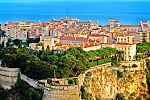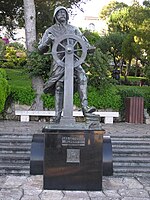Chapel of Mercy, Monaco-Ville
1639 establishments in Monaco17th-century Roman Catholic church buildingsEurope Roman Catholic church stubsEuropean church stubsMonaco-Ville ... and 3 more
Monaco stubsRoman Catholic churches completed in 1639Roman Catholic churches in Monaco

The Chapel of Mercy (French: La Chapelle de la Miséricorde) is a Roman Catholic church on the Rue Basse in Monaco's Monaco-Ville district.The chapel was built in 1639 and served as the seat of the Brotherhood of the Black Penitents. Honoré II, Prince of Monaco, served as the brotherhood's first prior. The interior decoration features wooden sculpture by François Joseph Bosio.
Excerpt from the Wikipedia article Chapel of Mercy, Monaco-Ville (License: CC BY-SA 3.0, Authors, Images).Chapel of Mercy, Monaco-Ville
Rue Notre-Dame-de-Lorete, Monaco Monaco City
Geographical coordinates (GPS) Address External links Nearby Places Show on map
Geographical coordinates (GPS)
| Latitude | Longitude |
|---|---|
| N 43.731161111111 ° | E 7.4234416666667 ° |
Address
Chapelle de la Miséricorde (Chapelle des Pénitents)
Rue Notre-Dame-de-Lorete
98000 Monaco, Monaco City
Monaco
Open on Google Maps








